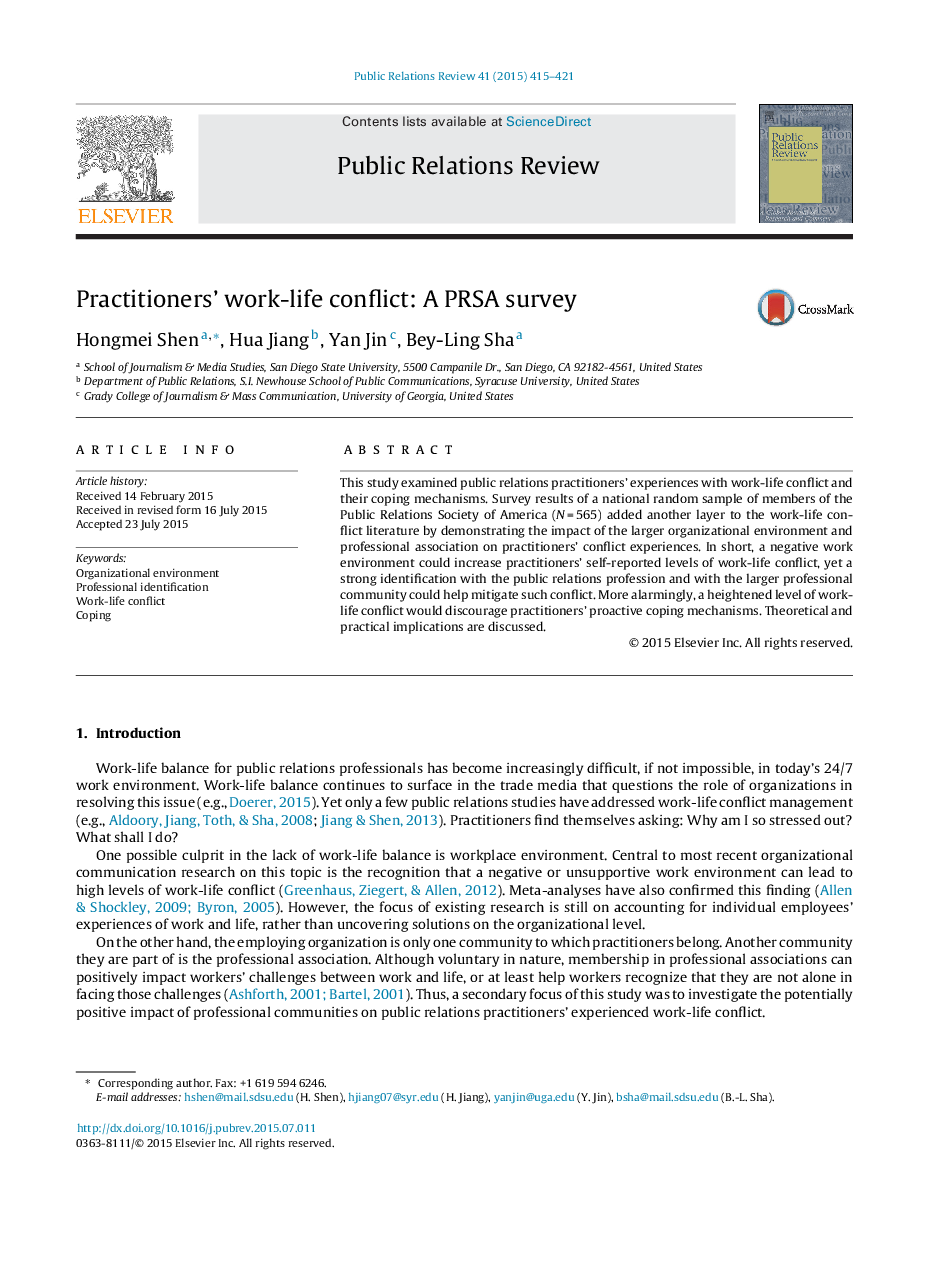| کد مقاله | کد نشریه | سال انتشار | مقاله انگلیسی | نسخه تمام متن |
|---|---|---|---|---|
| 138779 | 162473 | 2015 | 7 صفحه PDF | دانلود رایگان |
• This study examined public relations practitioners’ experiences with work-life conflict and their coping mechanisms.
• A national random sample of Public Relations Society of America (PSRA) members participated in the survey (N = 565).
• Our study confirmed that a negative organizational environment contributes to higher work-life conflict; yet a strong identification with the larger professional community could help mitigate work-life conflict.
• Lastly, a heightened level of work-life conflict vastly discouraged public relations practitioners’proactive coping mechanism. So proactive coping support is key.
This study examined public relations practitioners’ experiences with work-life conflict and their coping mechanisms. Survey results of a national random sample of members of the Public Relations Society of America (N = 565) added another layer to the work-life conflict literature by demonstrating the impact of the larger organizational environment and professional association on practitioners’ conflict experiences. In short, a negative work environment could increase practitioners’ self-reported levels of work-life conflict, yet a strong identification with the public relations profession and with the larger professional community could help mitigate such conflict. More alarmingly, a heightened level of work-life conflict would discourage practitioners’ proactive coping mechanisms. Theoretical and practical implications are discussed.
Journal: Public Relations Review - Volume 41, Issue 4, November 2015, Pages 415–421
